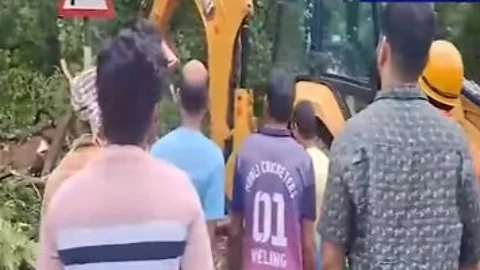

A massive Gulmohar tree collapsed near the Durbaleshwar Mahadev Temple on the Mardol Bypass in Goa, damaging two vehicles and injuring two people. The incident, caused by strong winds and heavy rain, is one of many weather-related mishaps reported across Goa in recent weeks. Emergency services acted swiftly to clear debris and assist those injured, but the event has reignited public concern over the safety risks posed by aging and unstable trees along major routes.
Residents have called on authorities to conduct urgent inspections of roadside trees—particularly along the Mardol Bypass and other high-traffic areas—and to remove those that are old, damaged, or pose a threat. With the monsoon season bringing increased wind and rainfall, locals argue that preventive measures such as regular tree audits, pruning, and removal are critical to ensuring public safety and avoiding damage to life and property.
The Mardol tree fall is not an isolated case. It reflects a larger trend of monsoon-related incidents in Goa, with emergency services receiving over 150 distress calls related to fallen trees, snapped power lines, and flooding. These recurring issues have prompted broader demands for improved disaster preparedness, better coordination among civic bodies, and a long-term strategy for urban forestry management.